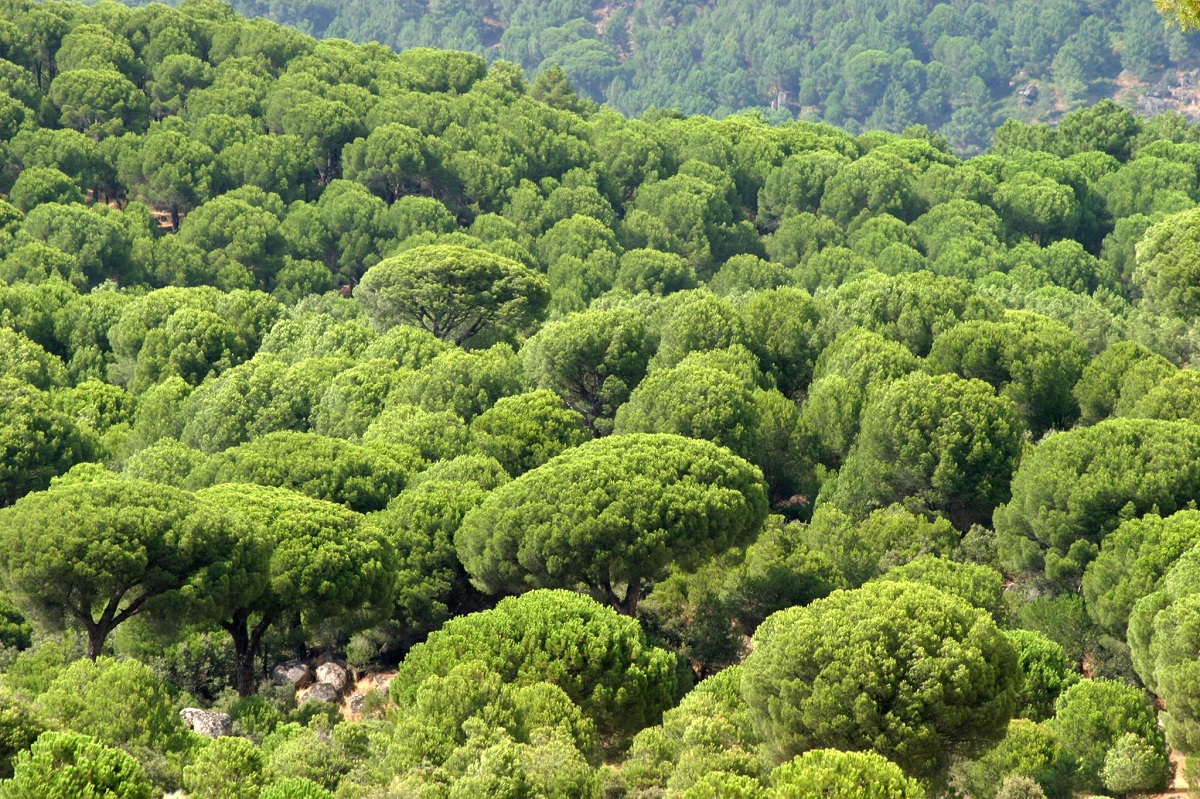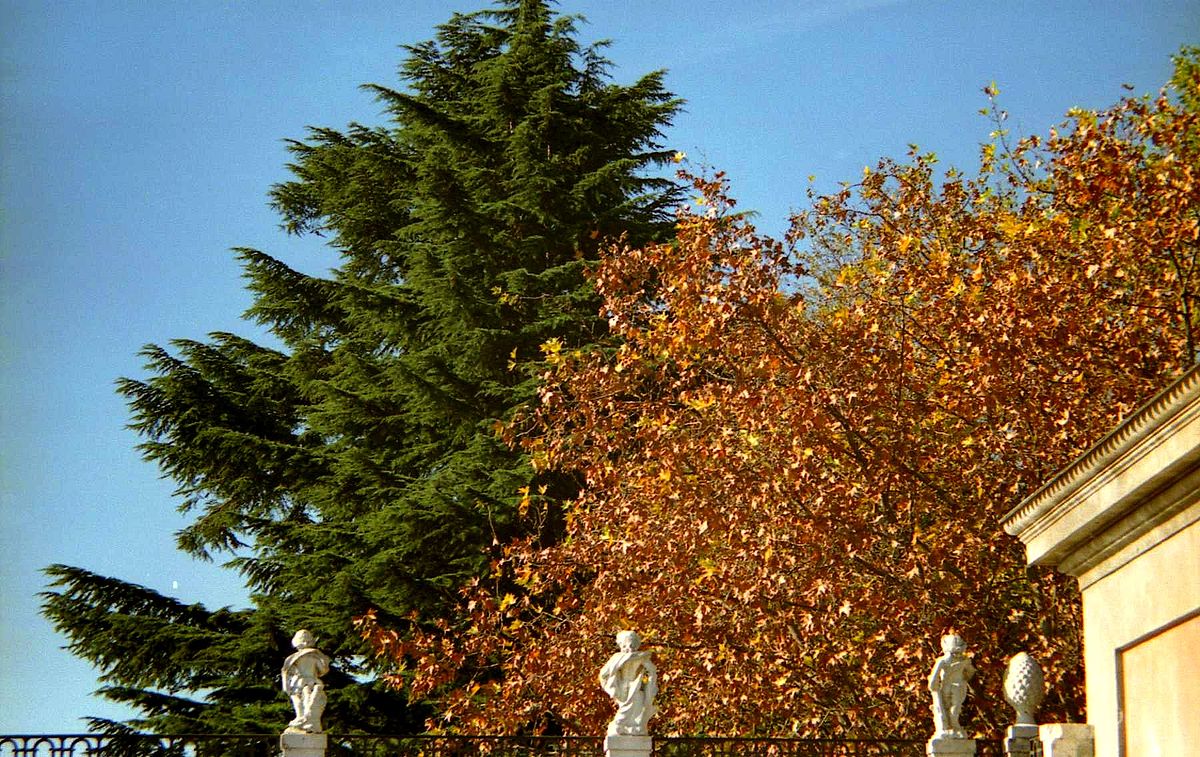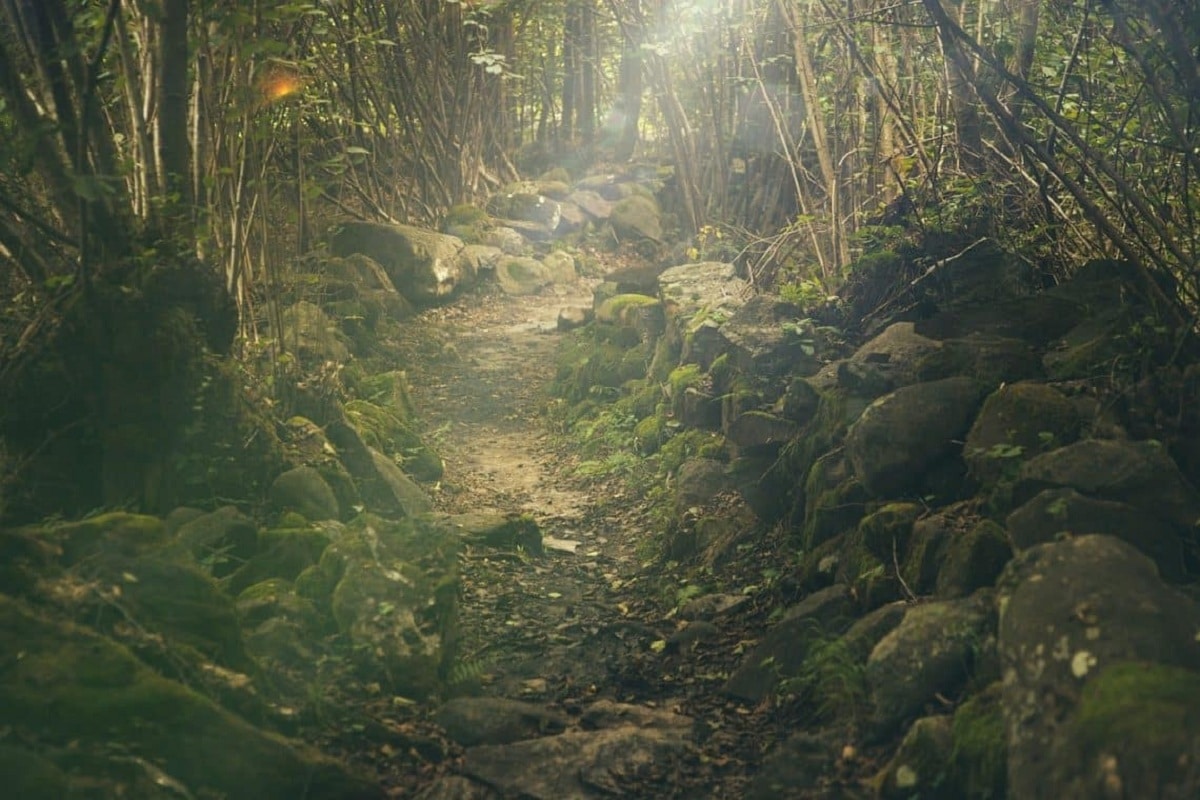
When we were little we were taught in school that there are two main types of trees. On the one hand, we have those trees that retain their leaves even in the winter season and, on the other hand, the other trees that lose them. The former are called evergreens and the latter are deciduous trees. The trees that conserve the greenness of their leaves regardless of the seasonal changes in the periods of vegetative rest and form a large mass are known as evergreen forest. Evergreen means a durable or evergreen leaf or tree. Some variants of this name are evergreen or semi-permanent.
In this article we are going to tell you all the characteristics, nature and ecology of the evergreen forest.
Key features

There are regions with inclement cold that make trees lose their leaves. However, evergreens do not shed their leaves or are affected by climatic variations. These trees shed a small fraction of their leaves to be able to renew them gradually. They do it every two or a year, but almost always keep their glass covered and showy with leaves. The leaves maintain their intense green color throughout the cycle.
The broadleaf evergreen forest is a subcategory that encompasses all those evergreen trees that have broad leaves. They are normally found in equatorial territories and in tropical lands whose main characteristic is very frequent rainfall. This means that there are specimens such as magnolia or ficus that can be found in areas with warmer environments. The enormous size of the leaves contributes to the diversity of altitudes of the flora.
These trees have large crowns that are capable of absorbing the sun's rays, preventing them from reaching the lower vegetation. In other words, the understory vegetation is more affected by the density of the leaves of these trees. This means that there are few shrubs that are capable of surviving under the shade that these trees generate. And, if they do not receive sunlight, they cannot properly photosynthesize.
There are species such as epiphytes that hang on logs or branches and vines that are very frequent in evergreen trees. These species are placed in such a way that they can get the rays of the sun. In the broadleaf evergreen forest it is less common to be able to see some trees in temperate climates but there are some exceptions such as orange, willow, laurel, carob, olive and eucalyptus.
Where there is a predominance of low temperatures birch trees reign. These birches belong to the order of the Fagales and They are also made up of other trees such as oak, beech and alder.
Evergreen forest with scales and needles

There is another type of evergreen forest with trees in which leaves predominate with a singular shape that emulates scales or needles. These sheets have a stiff texture to the touch and are covered in resin. The main species of these forests are cypress, pine, cedar, yew and sequoia. These trees are also in the comprised between conifers which are trees that grow with a horn-like appearance.
There are some species such as pine or larch that are abundant in regions that include Siberia, Alaska and Scandinavia. These species are capable of forming large wooded areas of thousands and thousands of hectares. These foliage are present in all the peaks and highest parts of the continents such as Asia, America and Europe.
Scientists have come to the conclusion that the evergreen forest is a form of adaptation to different environmental conditions. And it is that normally the flora tries to fit in that place where it must grow. This means that there are some specimens that have deciduous leaves and other evergreen leaves. The useful life of each leaf will depend on the peculiarities of the climate and the soil where the tree is. Each type of tree has different adaptation needs.
Some unconditional characteristic features for the adaptation of species are size, composition and shape. These characteristics mean that certain species such as holm oak can prevent dehydration in summer times when rainfall is lower and temperatures are higher. In addition, these characteristics help them to be able to preserve the leaves, temperatures drop due to the arrival of winter.
Evergreen forest and adaptation

Most of the evergreen forests that we find are in humid zones and floral zones of the Mediterranean. Keep in mind that plants have an adaptation process in order to survive the regular lack of rain. In the evergreen forest we find plants that have deep roots and of great extension that allow to find water resources in a more extended way. Further, the leaves have a resistant and strong texture to different adverse conditions and lack of rainfall.
The specimens that are most relevant in the evergreen forest are the cork oaks and the holm oaks. These trees are of medium altitude but have curved, thick and striated trunks. The tops of these trees are spherical and help provide excellent shelter from the sun.
The cork oak has an intense green color and some acorns sprout from it that are not edible. Its leaves measure between 4 and 7 centimeters and it can have a longevity of between 150 and 250 years. On the other hand, the holm oak has a consistent trunk with good resistance. It has various qualities that make it ideal for making furniture. Its wood is quite in demand.
Another variety of evergreen tree is pine. It is considered one of the surviving species. It has a great capacity to create fertile soils since it has a fairly high rate of leaf fall. Its ability to withstand wet, dry, cold and hot conditions makes it a favorite for decorating parks and open spaces. It is also ideal for reforestation as it generates a large amount of fertile soil.
Finally, the mimosa acacia also stands out among the evergreen group. It is capable of reaching 10 meters in height and its survival power is reinforced if enough pruning is carried out.
I hope that with this information you can learn more about the evergreen forest.